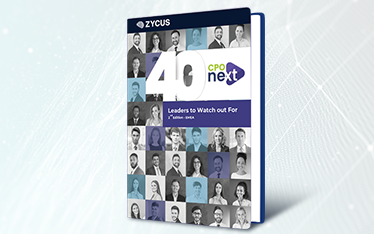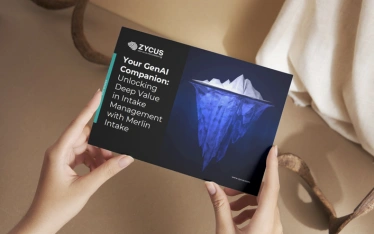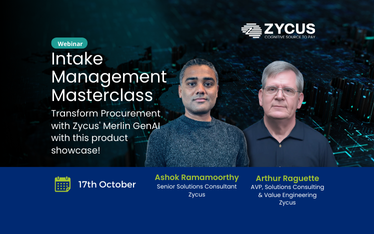What is Procurement Process?
A procurement process consists of defined steps that organizations follow to acquire goods or services for their objectives. This process, integral to business operations, is essential for expanding and optimizing performance. The overall procurement process encompasses a broader scope of activities beyond just purchasing, including supplier onboarding, contract management, invoice approval, and its interaction with supply chain management. Businesses source various goods and services externally, engaging in the procurement process, to support growth and efficiency. To leverage the benefits of globalization, organizations must collaborate with the most suitable local suppliers offering competitive prices.
Effective procurement process management aligns with an organization’s tactical and strategic objectives, ensuring success. The key to achieving perfection in procurement is obtaining the right goods and services from the right sources, contributing to the overall success of the process.
7 Steps of an Effective Procurement Process
Once you’ve comprehended and established a procurement plan and outlined the purchasing procedure, the subsequent phase involves implementing the procurement process to design it. At this point, it becomes crucial to determine the appropriate steps to incorporate into your procurement process.
Introducing strategic sourcing can significantly optimize the procurement process by automating processes, conducting supplier bidding and negotiation, and performing spend analysis.
It’s essential to recognize that a suitable purchasing process isn’t a one-size-fits-all solution. As a procurement professional, your responsibility is to identify the steps aligning with your organization’s specific needs and objectives. This customization is vital for your procurement process Key Performance Indicators (KPIs) to accurately reflect your procurement process improvement and management success.
The procurement business process encompasses numerous aspects that need consideration for optimizing the procurement process. Often, some of these aspects may not be applicable to your organization or industry.
Press release – Change is the Only Constant: Zycus’ New Age UI
Here are seven steps for creating an efficient procurement process flow:
Step 1: Identify the requirement for goods and services from all business units
The procurement process cycle starts when any of the business units in an organization needs obtaining goods/services from an external supplier. Hence, the first step of the procurement process entails identifying and consolidating the requirements of all business units in an organization by submitting a formal purchase request for goods and services. This provides visibility into the spend areas and categories to identify areas for cost savings through spend analysis.
This also helps the organization in their budgeting activities and to forecast the spends for the future. You can always modify the requirements based on the actual unit requirement but the forecast helps your organization to arrive at a ball-park figure to achieve maximum utilization of resources and avoid wastage.
Step 2: Identify and evaluate a list of suppliers
Once the business units identify their requirements, the next step in the procurement process cycle is to identify a list of potential vendors who may supply the goods and/or services. This process involves a simple web search or more structured measures like RFPs, RFQs, and RFIs as part of a competitive bidding process.
The objective of this step of the procurement process is to evaluate relevant suppliers. Evaluation metrics include pricing, quality of service, industrial reputation and recognition, warranty and guarantee provisions, and customer service. After the assessment is complete, the supplier who offers maximum value and the best market pricing earns the deal. Read Our Blog- Things You should Know about your Supplier Network!
Step 3: Negotiate the contracts with the selected supplier
After the procurement team selects a supplier to fulfill the requirements of an organization, the contract process begins. Contracting is a crucial step for any organization for maximum value creation and stimulating buyer-supplier collaboration. This step of the procurement process involves assessing critical factors like pricing structure, the scope of work, terms and conditions, timelines of delivery, etc. Detailed analysis and negotiation of contracts give insights into more cost savings opportunities, including dynamic discounting. Read Our Blog- Ultimate Guide to Contract Management: Benefits & Best Practices
Step 4: Raise a purchase requisition and release the purchase order
After finalizing the contract with a supplier, the next step is to raise a purchase requisition (PR). A PR includes a description of the good/service, pricing and quantity, supplier information, and the approval workflow.
Once a PR is approved, the finance team releases the purchase order (PO) to the supplier that documents information like the PO number, payment terms, supplier information, etc. Check out our eProcurement Software Solution Page.
Step 5: Complete the payment process upon receiving an invoice
Once the supplier receives a PO, he sends an invoice mentioning the price for requested goods/services. Once the organization gets the PO, and their invoice, the procurement process team ensures that the invoice is up-to-date with both quantity and quality before releasing payment.
When an organization sends out a purchase order, they also supply all necessary information about their requirements so as not to leave any gaps or confusion on what needs will be fulfilled by whom.
Depending on the payment terms established between the organization and its suppliers, the payment is released pre- or post-delivery. Read Our Blog- Why E-invoicing is in Focus Today & How Will it Benefit Your Business?
Step 6: Receive and audit delivery of requested goods/services
The supplier delivers the goods/services based on payment and contractual terms. On receipt, companies should audit to ensure the suppliers have met quality expectations. The audit process should include a review of the supplier’s documentation, as well as on-site inspections of the products or services delivered. The goal of the audit is to confirm that the supplier has met all contractual agreements and that the products or services meet the required quality standards.
If the supplier is found to be in non-compliance, corrective action may be taken, up to and including termination of the contract. Therefore, it is essential for companies to perform audits to protect their interests and ensure they are receiving quality products or services from their suppliers.
Step 7: Maintain proper records of invoices
The final step in the procurement management tools – After receiving a delivery, it is important to store the invoices in an effective manner. This will help to track spending and expenditure categories within the organization. There are various ways to store invoices, such as digitally or in physical folders. Digitizing invoices can be helpful if space is limited, and it also allows for easier access and organization.
How does Procurement works?
Procurement is the process of acquiring goods or services from an external source. It includes everything from identifying a need and finding potential suppliers to negotiating contracts and managing relationships with vendors. Effective procurement is a crucial part of supply chain management, integrating procurement management tools with other supply chain segments such as logistics, inventory management, and demand planning.
There are four main steps in the procurement process:
- Planning: This is when you identify what you need to purchase, research potential suppliers, and develop a procurement strategy.
- Once you’ve identified potential suppliers, you’ll send out an RFP that outlines your requirements and solicits bids from the vendors.
- Evaluation and selection: This is when you review the bids from vendors and select the supplier that best meets your needs.
- Contract management: Once you’ve selected a supplier, you’ll work with them to finalize the details of the contract. This content includes defining the scope of work, setting timelines, and agreed-upon prices.
Read our Whitepaper: Effective Guide to Evaluating Supplier Performance
Why is the procurement process necessary?
Procurement accounts for spending an organization’s revenue on acquiring goods and services. The procurement process has a direct impact on cost savings objectives.
Zycus‘ annual survey of 400+ global procurement leaders, Pulse of Procurement 2018, revealed that 54% of the surveyed professionals recognized cost savings as procurement’s key focus area. Furthermore, 65% of large organizations, 66% of mid-sized organizations, and 55% of small organizations were mandated to manage their spends from an enterprise-level. For that, an effective procurement process management system was the only solution to reap higher profits.
Apart from achieving cost savings objectives, an effective procurement process helps an organization in enhancing supplier performance, compliance, risk management, contract utilization, and sourcing cycle time.
Learn More: Are Purchasing and Procurement the Same?
Why is a periodic assessment of the procurement process necessary?
Any process needs to be scrutinized regularly to check if there are any bottlenecks or hurdles which need to be addressed to perfect the process. By periodically assessing supplier performance with regards to fulfilling an organization’s sourcing requirements, a procurement process helps identify the strengths and weaknesses of the suppliers on board.
A procurement process assessment further helps us ideate and innovate strategies for performance improvement. An effective procurement business process also enables organizations to build long-term relationships with their suppliers. Hence, by focusing on supplier relationship management, the synergies created between the two parties result in high propositions that provide maximum value for both the supplier and the buyer.
A well-implemented procurement process enables an organization to gain higher visibility into stakeholder performance. Greater transparency helps organizations enforce higher compliance in terms of costs, quality of goods/services, etc. across procurement activities.
Types of procurement
There are several kinds of procurement – Direct Procurement, Indirect Procurement, Goods Procurement, and Services Procurement.
- Direct Procurement – Direct procurement procures any raw materials, inputs, or substances that contribute directly to the company’s end product. This part of the procurement process is often where the highest costs are incurred, and typically, where the organization can save the least. Chief Procurement Officers and critical suppliers are the major stakeholders in this process.
- Indirect Procurement – Indirect procurement procures any goods, services, or entities needed for anything but the company’s end product. They don’t directly affect the company’s cost of goods or their bottom line, but they form a considerable chunk of the company’s spend. Examples of goods and services procured under indirect procurement are IT services, office supplies, etc.
- Goods Procurement – The procurement process for procuring physical goods differs a lot from the procurement process for services. Physical goods have a different set of costs as there is a necessity to travel through, what sometimes can be a long supply chain to get it to the organization that’s paying for it. Typically, the procurement procedure for purchasing goods involves a higher set of costs due to the material nature of the entities involved in the procurement cycle. In a direct procurement context, a majority of the procurement procedures are for goods procurement.
- Services Procurement – The procurement procedure for procuring services, virtual or otherwise, is typically carried out in the context of indirect procurement. The procurement process steps for services would most likely be for a single period if the organization is satisfied with the services. Services procurement could also be temporary – leasing services or contracting with a vendor for specific use cases.
Read our whitepaper on How to reimagine your digital procurement strategy to gain insights into how you can better use technology to reduce costs and drive greater efficiency in your procurement process.
Challenges in procurement and how to overcome them
An effective procurement process implementation comes with its fair share of challenges. Some key difficulties organizations face include:
- Fragmented Systems – Disjointed workflows, manual processes, and siloed systems constrain visibility and efficiency. Adopting integrated procurement software brings together sourcing, purchasing, invoicing, and payments on one cloud platform.
- Supplier Relationships – Maintaining strong partnerships across a vast supplier network is difficult without centralized interfaces. Supplier portals and networks powered by automation foster collaboration.
- Maverick Spending – Off-contract and unauthorized spending often slips through the cracks in complex organizations. Embedded contract compliance controls in e-procurement solutions improve governance.
- Actionable Insights – Deriving meaning from massive amounts of fragmented spend data is tough. Advanced analytics and reporting unlock hidden savings opportunities.
Read Our Whitepaper- Maximizing Benefits of Procurement Automation: Overcoming the Dearth of Supplier Adoption
Optimizing the Procurement Process?
Zycus offers AI-powered, integrated procurement solutions that help organizations overcome challenges and achieve process excellence. Some key capabilities include: –
1. End-to-End Procure-to-Pay Suite: Covers the full source-to-pay cycle with seamless data flow on one platform.
2. Supplier Network: Connects procurement organizations with suppliers on a single portal for simplified, compliant interactions.
3. Automation and AI: Reduces manual tasks through machine learning, internet of things integration, natural language processing, and more.
4. Advanced Analytics: Actionable insights generated from integrated expenditure data using predictive modeling and data science.
5. Tailored Role Workbenches: Personalized interfaces and prompts guide employees as they requisition, procure, manage contracts, and handle invoices.
An optimized procurement process is indispensable for organizations seeking to unlock savings, efficiency, and strategic advantage in today’s complex business landscape. By following procurement best practices and embracing technologies like Zycus’ AI-powered integrated suites, procurement leaders can elevate their function to new heights.
Connected end-to-end workflows, embedded compliance, in-depth analytics, and supplier collaboration are the hallmarks of procurement excellence. With the right focus and tools, the possibilities for procurement to drive impactful results are endless.
Get in touch with us for more information on how we can help!
Related Read:
- Procurement vs. Purchasing: The Definitive Guide
- How procurement automation can help in procurement transformation?
- Direct Procurement vs. Indirect Procurement : Key Differences Explained
- Procurement Risk Management: A Cognitive Data Driven Approach
- Augment your Procurement Function with Lean Procurement Strategy
- Streamline Your Procurement Processes with Integrated Source to Pay Platforms and Autonomous Quick Sourcing Technologies
- Ebook- Procurement Primer in Pictures: 2023 Part 1
- Whitepaper – Zycus Genesys: A Critical First Step in Transforming Procurement at Mid-market and High-growth Organizations













1 thought on “Procurement Process: 7 Steps for Optimal Efficiency and Cost Savings”
Can MSPs give us advantage over procurement? I mean, their potential contacts with vendors!